Gastrotypographicalassemblage
An iconic example of typographics in 3D.
The installation created to decorate the wall of the staff cafeteria in the newly built CBS building is one of the best examples of typographics. Designed by two close friends and former Cooper Union classmates, it was a striking example of the impact of the “type-only” solution.
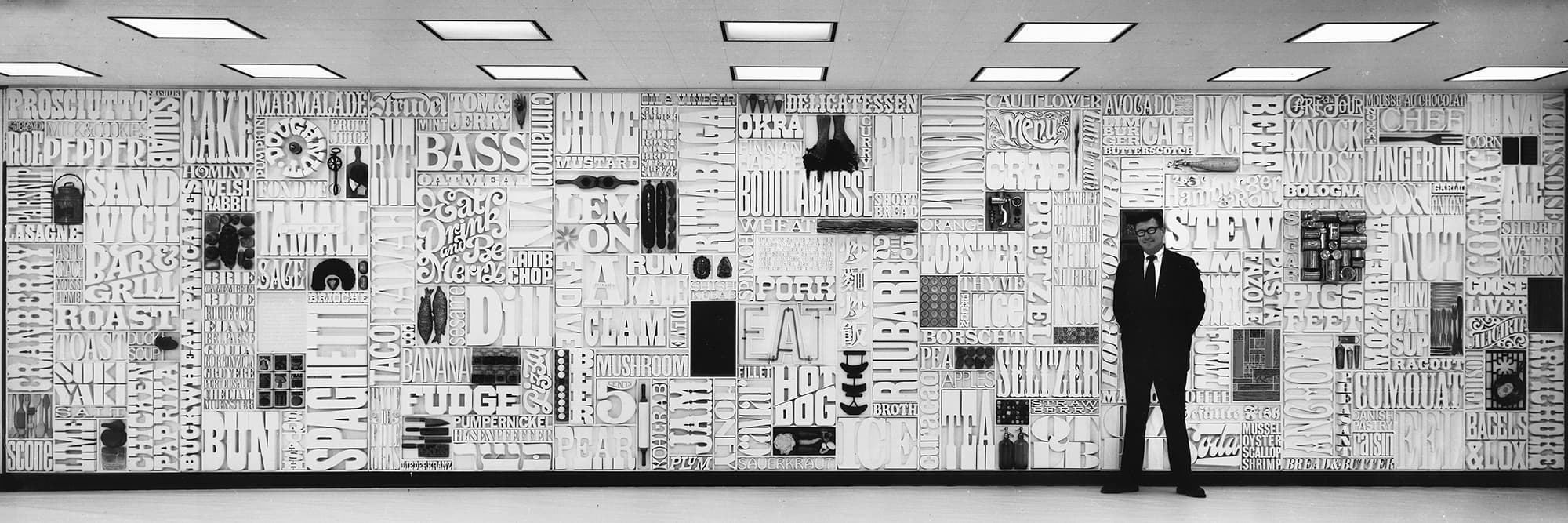
Lou Dorsfman standing in front of the CBS cafeteria wall he designed, circa 1966.
In 1965 Lou Dorfsman, then Creative Director for the CBS television network, was actively involved in the design of the interior and exterior graphics in the company’s new home at 51 West 52nd Street in New York City, designed by Eero Saarinen. He designed every aspect of the interior wayfinding using the custom version of Didot he commissioned, which was applied to everything, including replacing the numerals on 80 or so electric clocks being installed throughout the building. Best of all, he was able to somehow convince the fire inspectors to allow him to apply the same typeface to the typically strictly regulated exit signs.
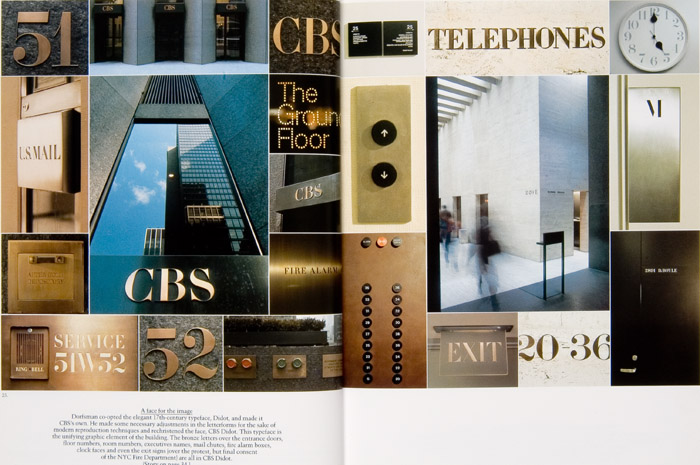
Photos of the signage Dorfsman designed for the building. Spread from the Dorfsman and CBS book.
Encountering the large blank wall of the staff cafeteria he proposed to Frank Stanton, then President of CBS, that they do something with it. He suggested making a large mural based on the design of a printer’s job case, filled with cutout, dimensional words relating to food and other food objects. With Stanton’s encouragement Dorfsman executed a rough sketch, and made a full-size sample panel. Once the sample was approved he enlisted his close friend Herb Lubalin to help design the eight additional panels. Lubalin, with the assistance of Tom Carnase, worked out the remaining compositions and lettering under Dorfsman’s direction. The result was a nine-panel, three-dimensional mural (8′ high, 33′ wide) now known as the Gastrotypographicalassemblage. (The original sample panel became the fourth panel from the left in the final composition.) It was installed in the CBS cafeteria in 1966, and remained there for 23 years.

Sketches of the wall rendered by Herb Lubalin and Tom Carnase
The above sketches show the evolution of the design of the Gastrotypographicalassemblage in the hands of Lubalin and Carnase. Note that the middle panel in the sketches is missing, as it had already been designed by Dorfsman and fabricated by Stanley Glaubach. The unsung hero in the fabrication of the mural is Glaubach, who jigsawed the finished lettering for the entire construction out of pine and poplar. The wall was surprisingly complex, as the letters ranged in depth from ¾″ to 4″ (with some as tall as 18″), giving the mural a vibrant and active presence. The wall was completed by the addition of real kitchen utensils and antiques, and consisted of 1,650 letters and 65 objects.
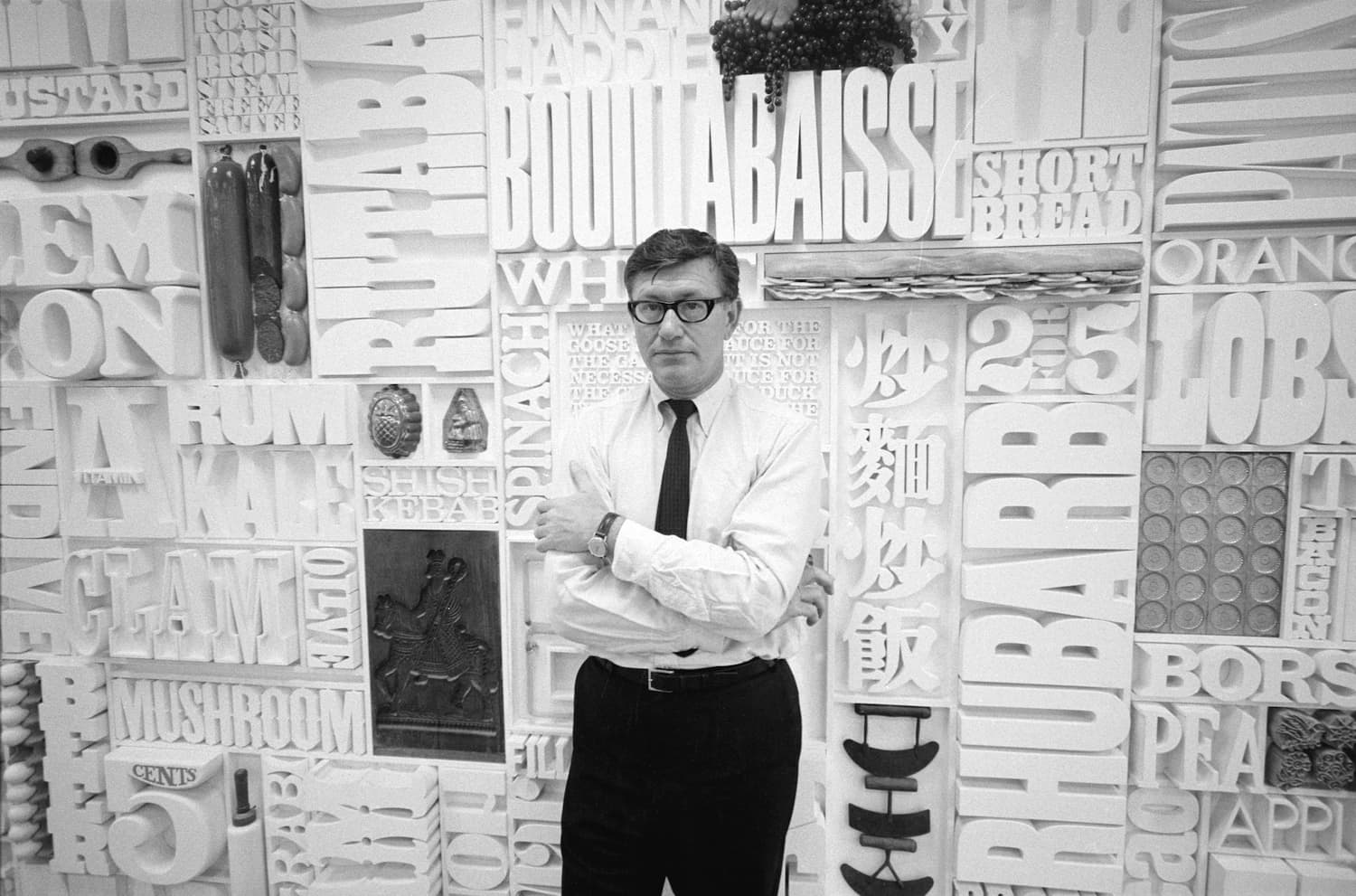
Lou Dorfsman in front of the finished wall, circa 1966.
Dorfsman retired from CBS in 1987, after forty-six years of service. In early 1991 he received a call from Richard Spero, CBS’s building superintendant, telling him that the wall had been dismantled and was sitting in the basement awaiting the dumpster. Dorfsman, in turn, called Nicholas Fasciano to come and salvage what he could. The broken and battered pieces sat in Fasciano’s workshop for years until The Center for Design Study in Atlanta brought attention to it in an effort to restore it in 2008. The funding necessary for the full restoration was recently provided by the Culinary Institute of America, which has placed the wall on display at their campus in Hyde Park, New York. If you’re in New York for the Typographics festival, you must visit it to see it in person, as it is truly an astounding piece of typographics.
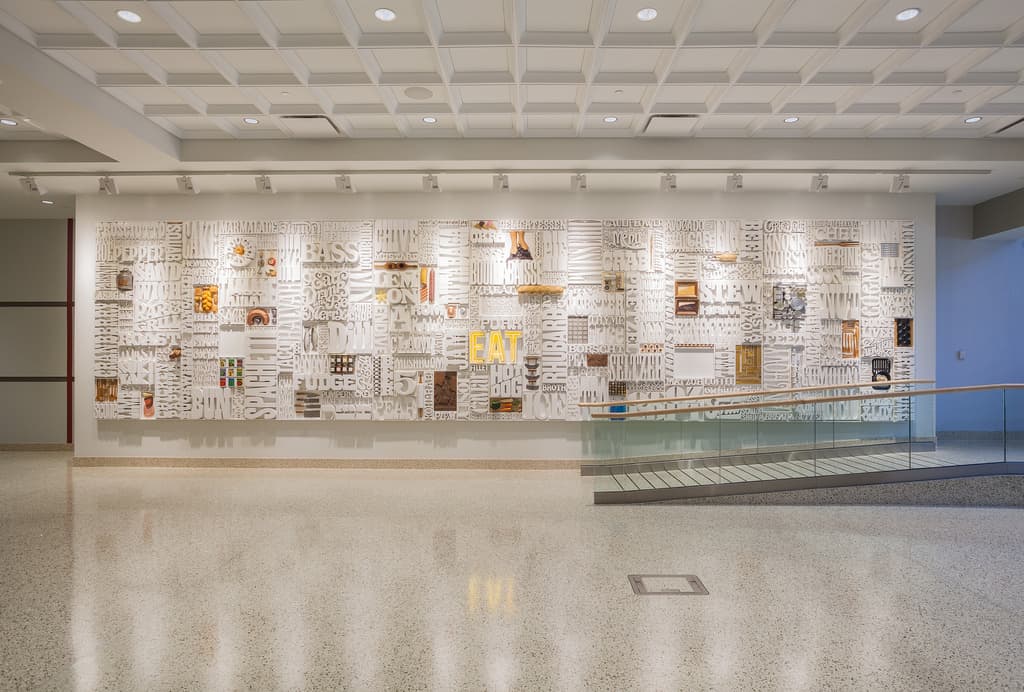
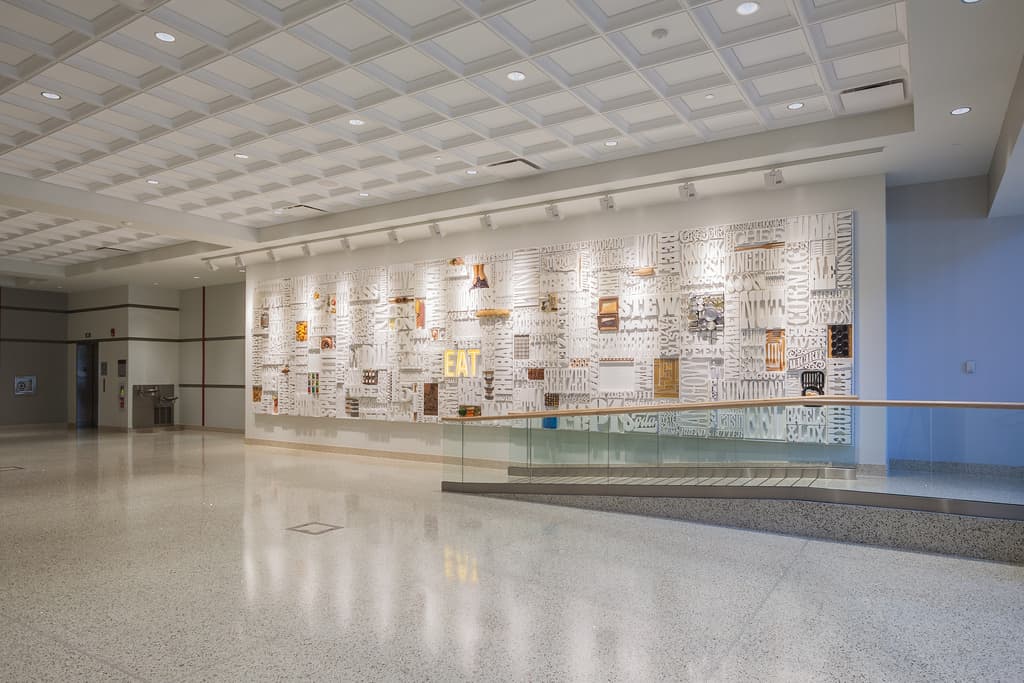
Lou’s restored wall on view at the Culinary Institute of America.
Article originally published in Codex magazine and has been edited and amended for publication here.
